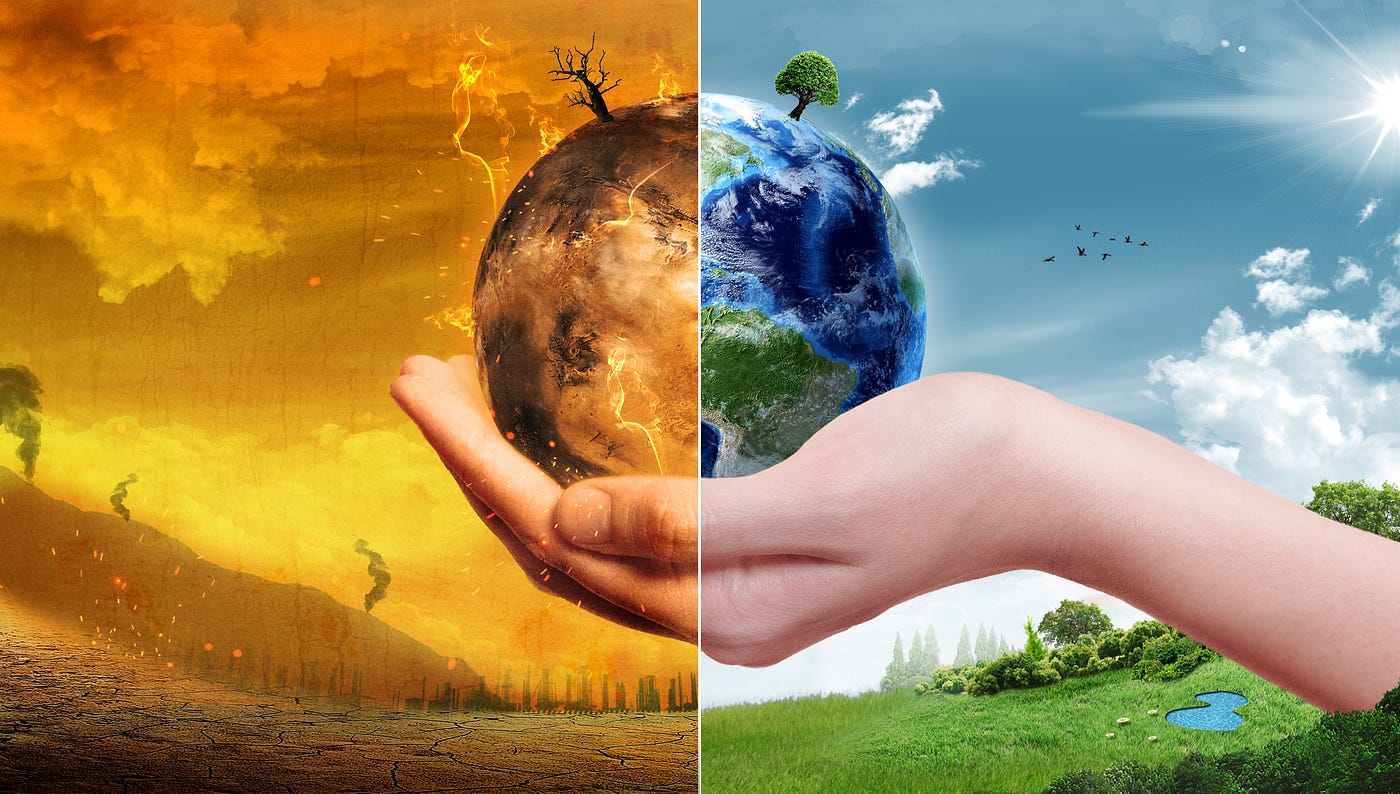Protecting Our Environment: A Call to Action for a Sustainable Future
The environment, encompassing the natural world that sustains life on Earth, is facing unprecedented threats due to human activities. Climate change, deforestation, pollution, and loss of biodiversity are putting immense pressure on ecosystems, leading to severe consequences for the planet and future generations. As individuals and communities, it is our responsibility to act now and protect the environment through sustainable practices. This article explores the major environmental challenges and the steps we can take to ensure a healthier, greener future.
Environmental Challenges We Face
- Climate Change: One of the most critical environmental issues today, climate change, is caused by the accumulation of greenhouse gases such as carbon dioxide and methane in the atmosphere. Human activities, including the burning of fossil fuels, deforestation, and industrial processes, have led to rising global temperatures, causing extreme weather events, melting ice caps, and rising sea levels. These changes disrupt ecosystems and threaten food security, livelihoods, and the health of the planet.
- Pollution: Pollution, in the form of air, water, and soil contamination, is a major environmental concern. Air pollution from vehicle emissions and industrial processes causes respiratory problems and contributes to global warming. Water pollution, often from untreated industrial waste and plastic, threatens marine life and contaminates drinking water sources. Soil pollution, caused by chemical fertilizers and pesticides, depletes land fertility and harms biodiversity.
- Deforestation: Forests are vital for maintaining ecological balance, providing oxygen, absorbing carbon dioxide, and supporting a rich variety of wildlife. However, deforestation driven by agricultural expansion, logging, and urban development is leading to habitat destruction and loss of biodiversity. Forests also play a crucial role in regulating climate by storing carbon, and their destruction accelerates global warming.
- Loss of Biodiversity: The Earth’s biodiversity—its variety of plant, animal, and microorganism species—is rapidly declining due to habitat destruction, pollution, and overexploitation. The loss of biodiversity destabilizes ecosystems, reduces resilience to environmental changes, and diminishes the ecosystem services that humans rely on, such as pollination, water purification, and climate regulation.
- Resource Depletion: The overconsumption of natural resources, including water, fossil fuels, and minerals, is unsustainable and depletes the Earth’s reserves. This leads to resource scarcity, environmental degradation, and conflicts over access to resources. Unsustainable practices, such as excessive water usage and land degradation, exacerbate these challenges.
Sustainable Practices for Environmental Protection
To address these challenges, we need to adopt sustainable practices that balance human needs with environmental protection. Here are key strategies for creating a more sustainable future:
- Renewable Energy: Transitioning from fossil fuels to renewable energy sources like solar, wind, and hydroelectric power is crucial for reducing greenhouse gas emissions and combating climate change. By investing in clean energy, we can reduce our reliance on nonrenewable resources and promote long-term environmental health.
- Conservation Efforts: Protecting natural habitats and restoring ecosystems is essential for preserving biodiversity. Reforestation efforts, wildlife conservation, and protected areas help maintain the balance of ecosystems and ensure the survival of species.
- Sustainable Agriculture: Sustainable farming practices, such as organic farming, crop rotation, and agroforestry, minimize environmental impact and promote biodiversity. Reducing the use of chemical pesticides and fertilizers, conserving water, and promoting soil health are critical for sustainable food production.
- Waste Reduction and Recycling: Reducing waste and improving recycling systems are effective ways to minimize pollution. Composting organic waste, recycling materials like plastic, glass, and paper, and reducing single-use products help conserve resources and protect the environment.
- Water Conservation: With freshwater resources becoming increasingly scarce, conserving water is essential. Simple actions such as fixing leaks, using water-efficient appliances, and harvesting rainwater can significantly reduce water waste.
The Role of Individuals and Communities
Every individual and community plays a vital role in environmental protection. By adopting eco-friendly habits and making conscious choices, we can collectively reduce our environmental footprint. Here are a few ways to contribute:
- Minimize Energy Use: Reducing energy consumption by turning off lights, using energy-efficient appliances, and opting for renewable energy sources can lower carbon emissions and help combat climate change.
- Sustainable Transportation: Walking, cycling, using public transport, or carpooling reduces carbon emissions and air pollution. Opting for electric or hybrid vehicles can also minimize the environmental impact of transportation.
- Support Eco-Friendly Products: Choosing products made from sustainable materials and reducing the use of single-use plastics helps minimize waste and pollution. Supporting companies that prioritize environmental sustainability can drive broader industry change.
- Raise Awareness: Educating others about environmental issues and advocating for policy changes can inspire collective action. Encouraging governments and businesses to adopt sustainable practices is crucial for large-scale environmental protection.
Global Cooperation for Environmental Sustainability
Environmental protection requires global cooperation. International agreements like the Paris Climate Agreement and the United Nations’ Sustainable Development Goals provide frameworks for countries to collaborate on addressing climate change, reducing pollution, and protecting ecosystems. Governments, businesses, and civil society must work together to create policies and practices that promote sustainability and ensure a better future for all.
Conclusion
The environment is the foundation of life, and its health is critical to the survival of all species, including humans. The challenges we face—climate change, pollution, deforestation, and biodiversity loss—demand immediate action. By adopting sustainable practices, reducing our environmental impact, and promoting global cooperation, we can protect the planet for future generations. The time to act is now, and every step we take brings us closer to a more sustainable and resilient world.


